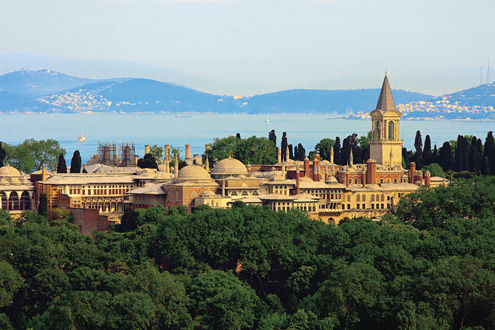Osman Gazi (reigned 1299–1324)—known in Italy as Ottomano, hence the English term Ottoman—was a Turkish tribal leader and the founder of the Ottoman dynasty. Through both warfare and diplomacy, he was able to unify inherited and captured lands under his rule. Successful military campaigns by his successors extended the empire deep into the Balkans to the north, and into Egypt and North Africa to the west, and eastward into the Caucasus and Anatolia.
In 1453, the city of Constantinople (present-day Istanbul), the capital of the Byzantine empire, was captured by the Ottoman sultan Mehmet II (reigned 1451–81). It remained the Ottoman capital until 1923. Mehmet II's leadership and legacy were instrumental in the steady growth of the empire in the fifteenth and sixteenth centuries.
Ottoman cultural, political, and economic power reached its zenith under Sultan Süleyman I (reigned 1520–66), his son Selim II (reigned 1566–74), and his grandson Murad III (reigned 1574–95), who all ruled from the Topkapı Palace in Istanbul (fig. 25). Süleyman I was known in Turkey as Kanuni (the Lawgiver) because of the numerous legal reforms he made that shaped Ottoman law for many centuries. In the West, where he was both admired and feared, Süleyman became known as "the Magnificent"—a testament to his political and cultural achievements and his reputation as a wealthy and powerful ruler.
By the eighteenth century, despite repeated efforts to reform and modernize the army and civil institutions, the vast Ottoman empire started to decline. By the nineteenth century, many of its territories in North Africa, Europe, and West Asia were lost. In 1923, the modern Turkish Republic, established by Mustafa Kemal Atatürk, replaced the Ottoman state.

Fig. 25. Topkapı Palace, Istanbul, Turkey, begun 1459
| Previous Section | Next Section |